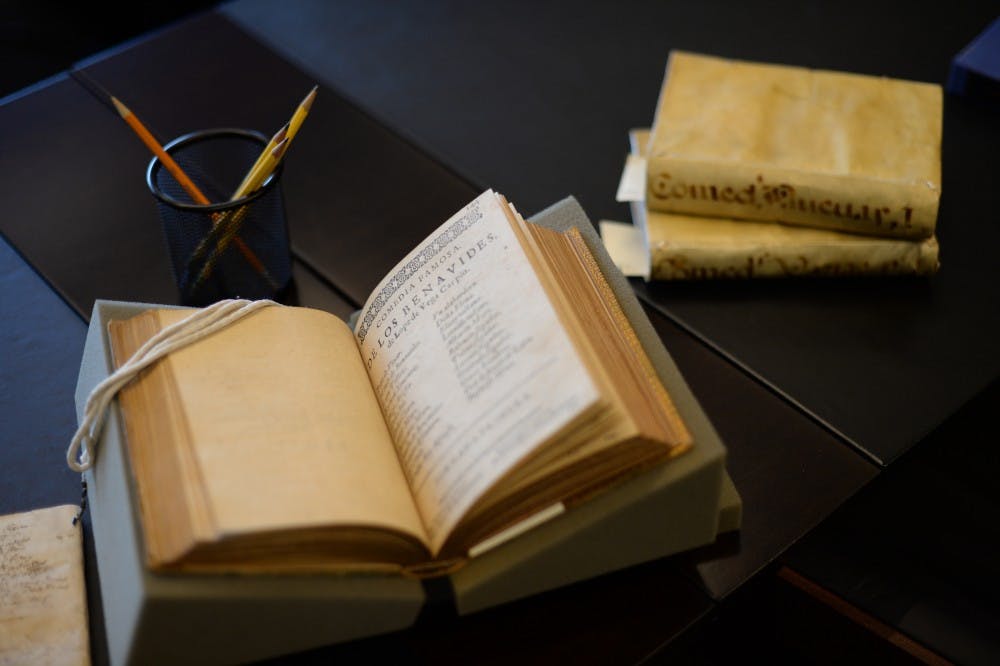
Penn aims to unite computer programming and literature analysis through new digital humanities projects.
Credit: Alex Fisher , , ,Computer programming and literature analysis are very different subjects that require very different skills, but Penn is hoping to bring them together.
The School of Arts and Sciences launched a new strategic plan in January 2015, with a major goal of advancing the humanities in a digital age. The school has been working to meet several goals, but the “digital humanities” initiative has been growing most quickly.
This focus on digital humanities — an innovative area of research that introduces new technology to humanities — involves the development of programs that allow students to work in teams and use advanced technologies to analyze data sets.
“An interesting synergy has developed between people who usually are as far away from technology as you can get, but are using technology to study things that have been traditionally been the realm of people sitting in library carrels or in museums looking at artifacts,” said Dennis DeTurck, dean of the College of Arts and Sciences.
The recent establishment of the Price Lab has contributed substantially to the progress made in the field.
“One of the ways that digital humanities differ from earlier moments in humanities research is that we used to work very much as individuals,” said Jim English, English professor and founding faculty director of the Price Lab for Digital Humanities. “Unlike sciences, where you have teams and labs, in the humanities, [an individual is often] with some books at a desk.”
English said that in digital humanities projects, collaborative research is key.
“[This] lab model of collaborative research is exciting because it means a lot of potentially stimulating new work habits for students as well as faculty, it opens up more room for teams of students and faculty together, and it’s very interdisciplinary because someone will have a particular set of skills — maybe they’re very good at digital mapping or writing code — and someone else knows a lot about eighteenth century novels,” English said.
The Price Lab, which was launched in fall 2015, hopes to promote collaboration between disciplines that haven't previously worked closely — like launching projects in which students in the School of Engineering and Applied Science work with students studying ancient archaeology to produce 3D models of ancient sites.
The lab is also creating and will launch courses in the next few years that teach students about computer programming with a focus on analyzing textual data and questions relevant to the humanities. It plans to launch an intro to text mining course, and eventually, an intro to programming course for non-science students.
“If you take a course in the engineering school, an intro to programming class, all the assumptions built in are that you’re basically a computer scientist or engineer,” English said.
The Price Lab is now working on a “rigorous, serious programming class that gives you the basics about how programs work and gives you good facility in coding, but where all the problems that you’re working on are relevant to us in the humanities.”
English predicted that once this course is launched, it will become very popular.
“It’s pretty important to learn how to code at this point,” English said. “If you’re coming out of a top university and you’re looking to get into the workplace these days, even if you’re a history major or English major, you want to have some experience in coding.”
The Price Lab was launched only recently, so it is still in the process of recruiting personnel and next year will be the first year of full operations. English added that the Price Lab hopes to create more opportunities for undergraduates over the next few years.
The Daily Pennsylvanian is an independent, student-run newspaper. Please consider making a donation to support the coverage that shapes the University. Your generosity ensures a future of strong journalism at Penn.
DonatePlease note All comments are eligible for publication in The Daily Pennsylvanian.





